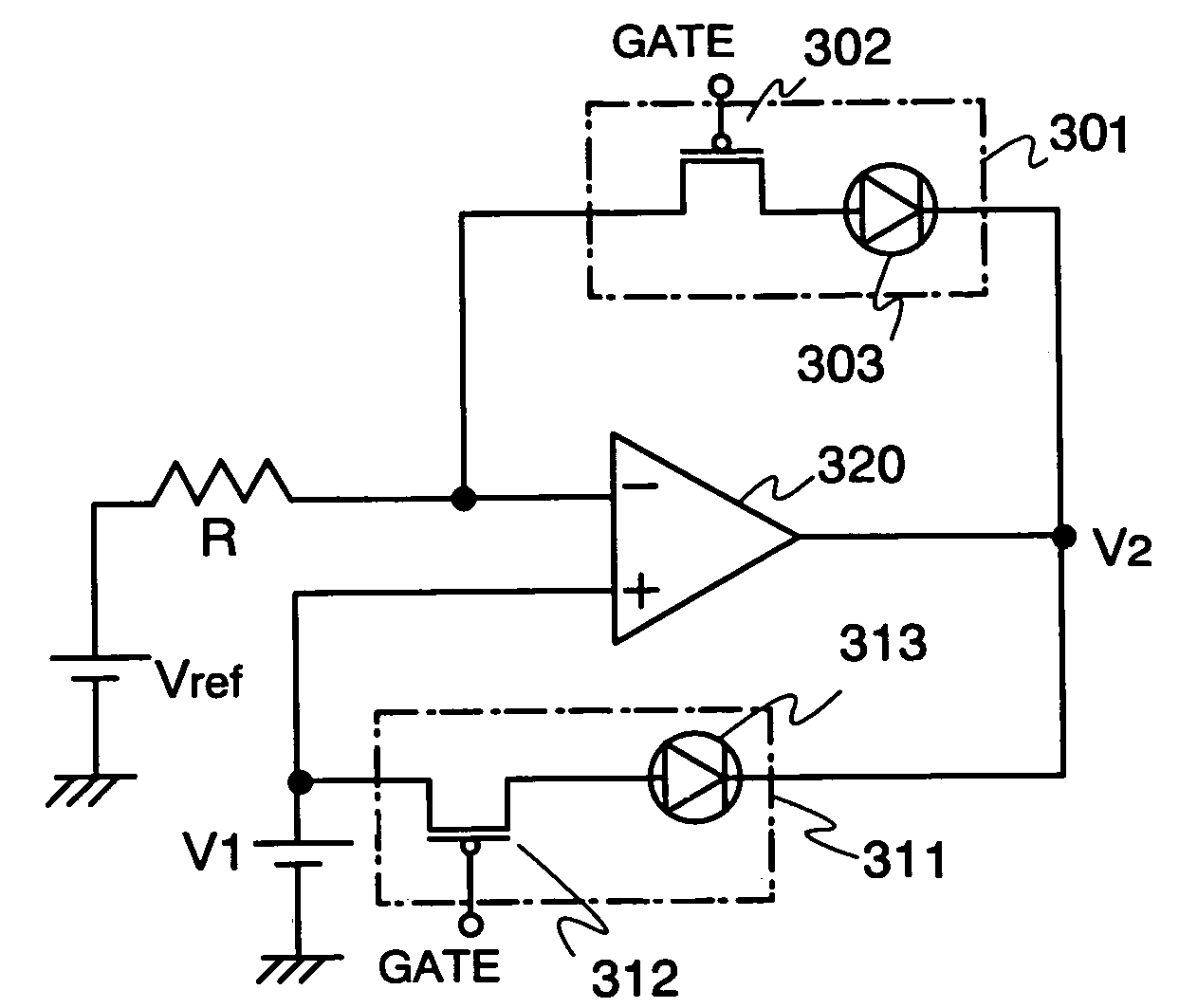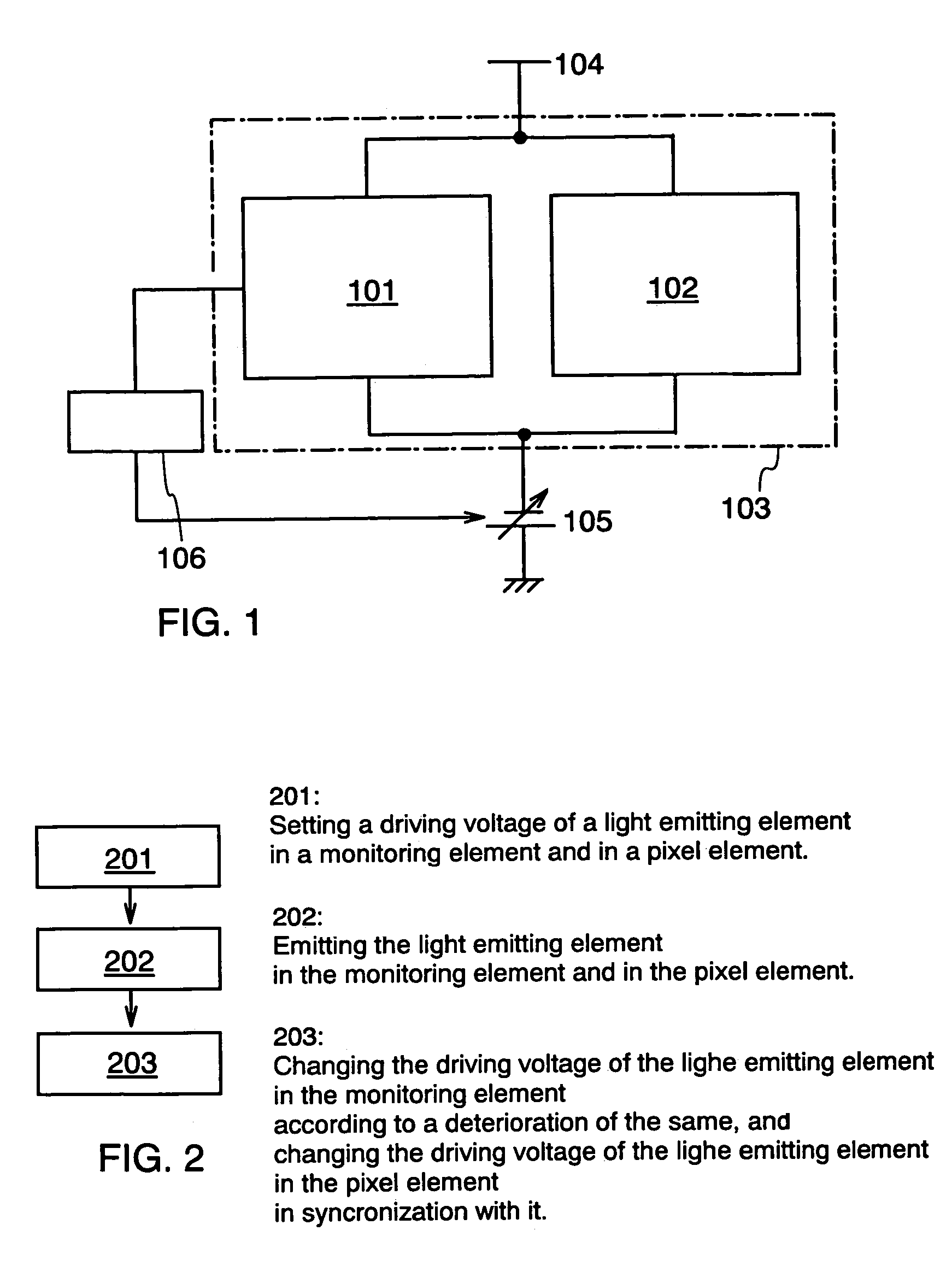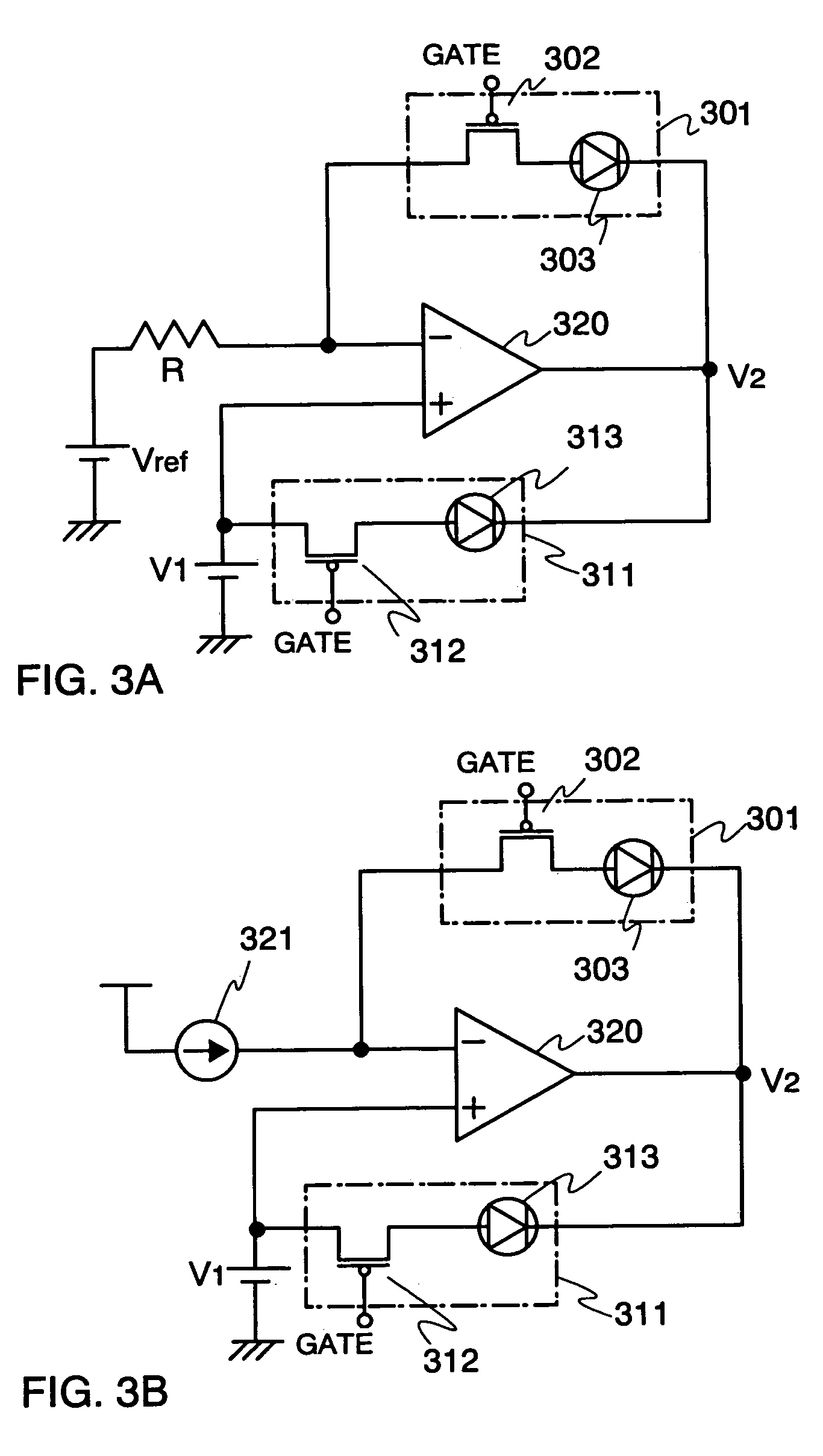Display device and controlling method thereof
a technology of a display device and a control method, which is applied in the field of display devices, can solve the problems of high power consumption and heat generation of pixels, and achieve the effects of reducing heat generation and high power consumption at pixels, reducing deterioration of light emitting elements, and avoiding heat generation and high power consumption
- Summary
- Abstract
- Description
- Claims
- Application Information
AI Technical Summary
Benefits of technology
Problems solved by technology
Method used
Image
Examples
embodiment mode 1
[Embodiment Mode 1]
[0049]Hereinafter explained with reference to FIG. 3 is an example in which an operational amplifier is used as a power source voltage controller. Note that in this embodiment mode, a p-channel type driver transistor is applied, but an n-channel type driver transistor can be applied instead. Meanwhile, as an example of the invention, an anode potential of a pixel 311 (Vanode) is referred to as V1, and cathode potentials of the pixel 311 and of a monitoring element 301 (Vcathode) are referred to as V2.
[0050]FIG. 3A shows an equivalent circuit diagram of a pixel structure of the invention. A monitoring element 301 has a driver transistor 302 and a light emitting element 303 which is connected to a second electrode of the driver transistor 302. A pixel 311 has a driver transistor 312 and a light emitting element 313 which is connected to a second electrode of the driver transistor 312. The light emitting elements 303 and 313 are connected to an output terminal of the...
embodiment mode 2
[Embodiment Mode 2]
[0070]Hereinafter explained with reference to FIG. 4 is a different pixel structure from that of Embodiment Mode 1. Note that in this embodiment mode, a driver transistor is a p-channel type, an anode potential of a light emitting element (Vanode) is referred to as V1, and a cathode potential of the light emitting element (Vcathode) is referred to as V2.
[0071]An equivalent circuit diagram of a pixel structure is shown in FIG. 4. As well as Embodiment Mode 1, a monitoring element 401 has a driver transistor 402 and a light emitting element 403 which is connected to a second electrode of the driver transistor 402. A pixel 411 has a driver transistor 412 and a light emitting element 413 which is connected to a second electrode of the driver transistor 412. The light emitting elements, 403 and 413 are connected to an output terminal of the operational amplifier 420 and have a voltage of V2. Meanwhile, first electrodes of the driver transistors 402 and 412 have potenti...
embodiment mode 3
[Embodiment Mode 3]
[0081]Hereinafter explained is a different pixel structure from those of Embodiment Mode 1 and Embodiment Mode 2.
[0082]FIG. 10 shows a circuit diagram as described in Embodiment Mode 2, wherein a switching regulator 3000 is applied in stead of an operational amplifier as a power source voltage controller. For a constitution where an operational amplifier is applied, a power source circuit for the operational amplifier is required. This embodiment mode makes it possible to unite an operational amplifier and the power source circuit by using a switching regulator.
[0083]A pixel structure which has a switching regulator will be hereinafter described. In FIG. 10, the switching regulator 3000 is comprised of an error amplifier 3001, a PWN comparator 3002, a reference power sources 3003 and 3010, an oscillation circuit 3004, a switching transistor 3008, an inductor 3009, a diode 3006, a smoothing capacitor 3005 and a battery 3007. As well as Embodiment Mode 2, a monitori...
PUM
 Login to View More
Login to View More Abstract
Description
Claims
Application Information
 Login to View More
Login to View More - R&D
- Intellectual Property
- Life Sciences
- Materials
- Tech Scout
- Unparalleled Data Quality
- Higher Quality Content
- 60% Fewer Hallucinations
Browse by: Latest US Patents, China's latest patents, Technical Efficacy Thesaurus, Application Domain, Technology Topic, Popular Technical Reports.
© 2025 PatSnap. All rights reserved.Legal|Privacy policy|Modern Slavery Act Transparency Statement|Sitemap|About US| Contact US: help@patsnap.com



